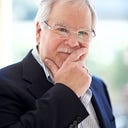In September Australian real unemployment is now 8.5% (up 0.2% in a year) and under-employment 7.7% (up 0.4%)
In September a total of 2.103 million Australians, 16.2% of the workforce, were either unemployed (1,101,000) or under-employed (1,002,000).
This is up 109,000 (up 0.6%) from September 2015.
Unemployment is now comparable to a year ago with 1.101 million Australians (up 43,000 since September 2015) now unemployed.
These real unemployment figures are substantially higher than the current ABS figure for August 2016 (5.6%).
- Australian real unemployment was 8.5% (up 0.2% in a year but down 1.9% in a month); the fall in unemployment in September was not unexpected as the same movement was observed a year ago;
- The Australian workforce increased to 12,930,000 (up 166,000 since September 2015), but total employment only increased to 11,829,000 (up 123,000) — this shows there have not been enough new full-time jobs created over the past year to soak up the growing number of people looking for work and thus the increasing size of the workforce;
- The problem can be seen when one looks at full-time employment which is now 7,887,000 — virtually unchanged from a year ago (7,888,000 in September 2015). In contrast, part-time employment has increased by 124,000 to 3,942,000 over the past year (an average of just over 10,000 per month);
- The higher part-time employment contributed to the rise in under-employment; now 7.7% of Australians (1,002,000, up 66,000 since September 2015) are under-employed (up 0.4%) — working part-time and looking for more hours.
Roy Morgan Unemployed and ‘Under-employed’* Estimate
Unemployed or
‘Under-employed’*
Unemployed
Unemployed looking for ‘Under-employed’* Full-time
Part-time
‘000 % ‘000 % ‘000 ‘000 ‘000 % 2016 Jan-Mar 2016 2,496 19.1 1,362 10.4 639 723 1,134 8.7 Apr-Jun 2016 2,322 18.1 1,317 10.2 637 680 1,005 7.8 Jul-Sep 2016 2,296 17.8 1,266 9.8 574 692 1,030 8.0 Months August 2015 2,117 16.6 1,173 9.2 548 625 944 7.4 September 2015 1,994 15.6 1,058 8.3 482 576 936 7.3 October 2015 2,198 17.4 1,110 8.8 464 646 1,088 8.6 November 2015 2,536 19.6 1,186 9.2 623 563 1,350 10.4 December 2015 2,690 20.7 1,256 9.7 722 534 1,434 11.0 January 2016 2,575 19.7 1,346 10.3 696 650 1,229 9.4 February 2016 2,480 18.8 1,319 10.0 589 730 1,161 8.8 March 2016 2,433 18.8 1,422 11.0 631 791 1,011 7.8 April 2016 2,322 18.1 1,334 10.4 611 723 988 7.7 May 2016 2,316 18.1 1,369 10.7 661 708 947 7.4 June 2016 2,326 17.9 1,247 9.6 637 610 1,079 8.3 July 2016 2,536 19.5 1,365 10.5 645 720 1,171 9.0 August 2016 2,249 17.5 1,332 10.4 544 788 917 7.1 September 2016 2,103 16.2 1,101 8.5 532 569 1,002 7.7
*Workforce includes those employed and those looking for work — the unemployed.
Gary Morgan, Executive Chairman, Roy Morgan Research, says:
“It has now been a year since Malcolm Turnbull took the top job by replacing Tony Abbott as Australian Prime Minister in September 2015. However, the latest Roy Morgan September unemployment and under-employment estimates show Turnbull has yet to make a positive impact on Australia’s more than 2 million unemployed and under-employed workers. [adrotate group=”8"]
“In September Australia’s real unemployment was 8.5% (1.101 million people looking for work, 43,000 more than a year ago) and under-employment was 7.7% (1,002,000, up 66,000 in a year) — a total of 16.2% (2.103 million) Australians looking for work or looking for more work.
“Although the Australian workforce has increased over the past year — now at 12,930,000 (up 166,000 from a year ago), the increase in the workforce has outpaced the increase in overall employment leading to the rise in unemployment.
“The problem faced by the workforce has been a lack of new full-time jobs — now 7,887,000 Australians are employed full-time, virtually unchanged from a year ago (7,888,000 in September 2015). In that same time part-time jobs have surged to 3,942,000 (up 124,000) and more people are looking for work.
“The reasons are well known — the loss of many high-paying full-time jobs with the end of the ‘Mining boom’ is exemplified by the troubles faced by South Australian miner and steel company Arrium and the refiner Queensland Nickel — both now in administration.
“In addition, high-profile retailers including Dick Smith and Masters have either closed or are in the process of closing down and last week saw the last Ford car manufactured in Australia and the last Holden car manufactured in Adelaide — also a pointer towards further jobs to be lost in the automotive industry as both Holden and Toyota cease Melbourne manufacturing this time next year.
“The extensive loss of full-time jobs in the Australian economy presents a challenge to the Turnbull Government, and these problems are set to intensify over the next year. The Government’s proposed business tax cuts are a key part of the Government’s strategy to get the Australian economy moving again.
“The recent passing of the Government’s ‘Omnibus’ tax cuts legislation with promised savings of $6.3 billion is a good example of how it is possible for the Government to work productively with Opposition Leader Bill Shorten and the ALP, and in doing so sideline the Senate cross-benchers, to pass important legislation.”
Source: www.roymorgan.com
Originally published at Property Update.
